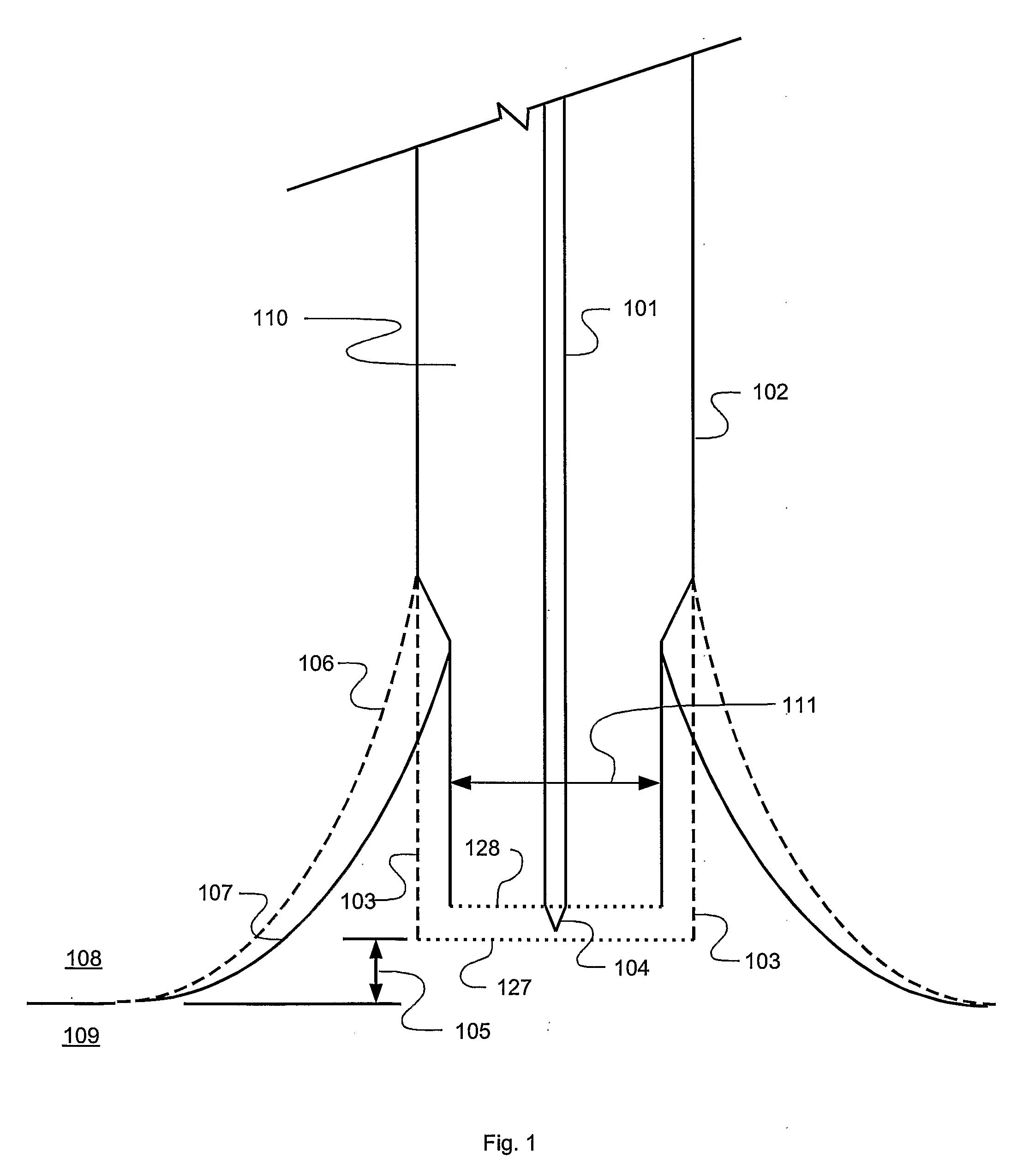Optical fiber probe tips and methods for fabricating same
a technology of optical fiber and tips, applied in the field of optical probes, can solve the problems of limited the utility of nsom in experiments such as near-field raman spectroscopy, single molecule fluorescence, and often show scalping and other defects, and achieves high throughput, good polarization maintenance, and unique optical transmission properties.
- Summary
- Abstract
- Description
- Claims
- Application Information
AI Technical Summary
Benefits of technology
Problems solved by technology
Method used
Image
Examples
Embodiment Construction
[0030]A process in accordance with an exemplary embodiment of the present disclosure is shown in FIG. 1 in which the distal end of an optical fiber, designated 110, which may be, for example, part number SM600 available from Thorlabs, Inc. of Newton, N.J., USA, is immersed a particular height 105 in an etching solution 109. The etching solution can be, for example, 30:1 buffered oxide etch (BOE) available from Mallinckrodt Baker, Inc. of Phillipsburg, N.J., USA. The optical fiber 110 consists of a glass core 101 and cladding 102. If the fiber 110 is supplied with a plastic jacket or other covering which could interfere with the etching process, the plastic jacket is removed from the region to be etched. The material generally designated 108 and located above the etching solution may be air. In one embodiment, material 108 is an inert layer of, for example, isooctane, which prevents evaporation of the etching solution and protects the upper portion of the fiber 110 from damage from B...
PUM
 Login to View More
Login to View More Abstract
Description
Claims
Application Information
 Login to View More
Login to View More - R&D
- Intellectual Property
- Life Sciences
- Materials
- Tech Scout
- Unparalleled Data Quality
- Higher Quality Content
- 60% Fewer Hallucinations
Browse by: Latest US Patents, China's latest patents, Technical Efficacy Thesaurus, Application Domain, Technology Topic, Popular Technical Reports.
© 2025 PatSnap. All rights reserved.Legal|Privacy policy|Modern Slavery Act Transparency Statement|Sitemap|About US| Contact US: help@patsnap.com



